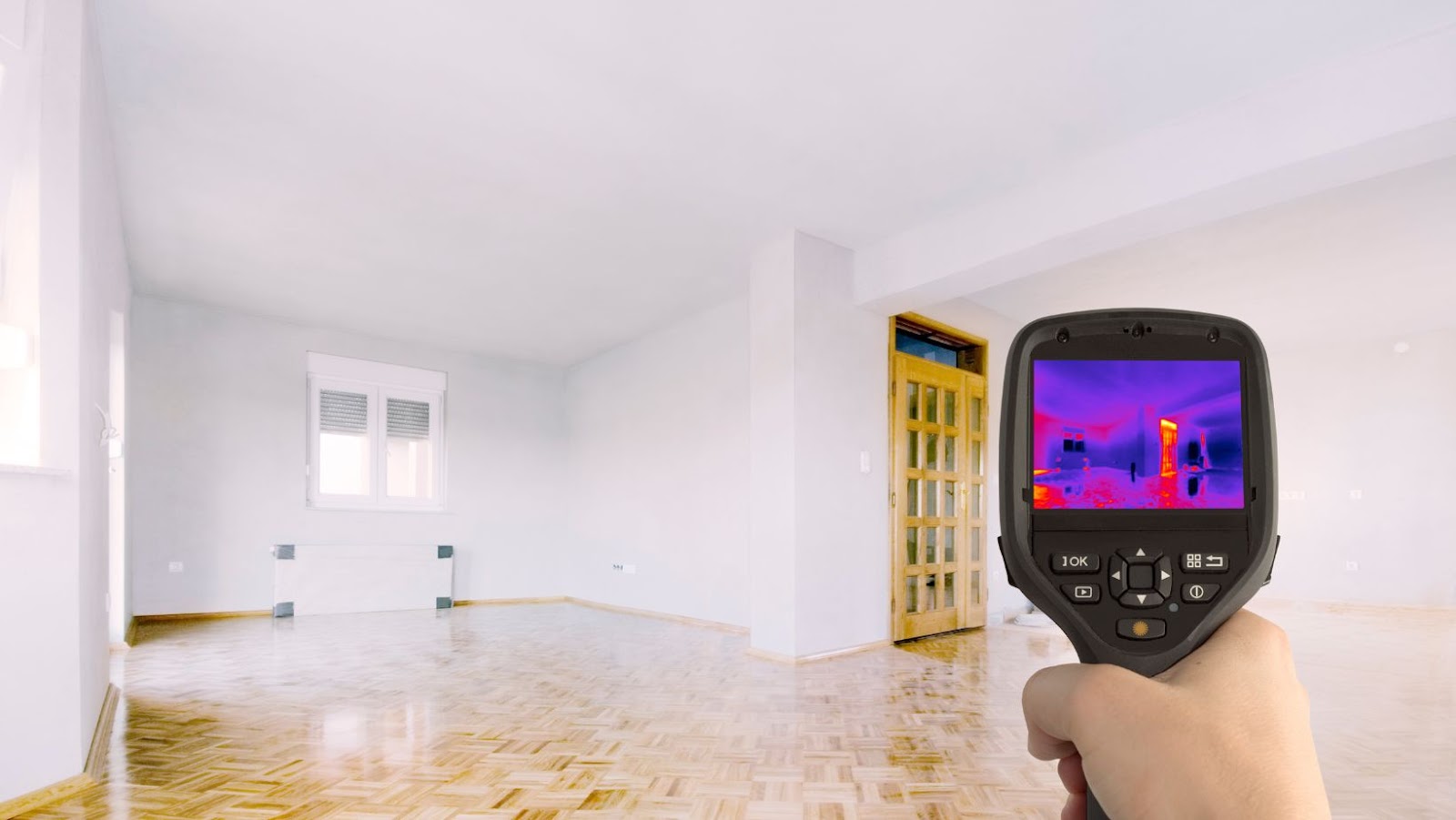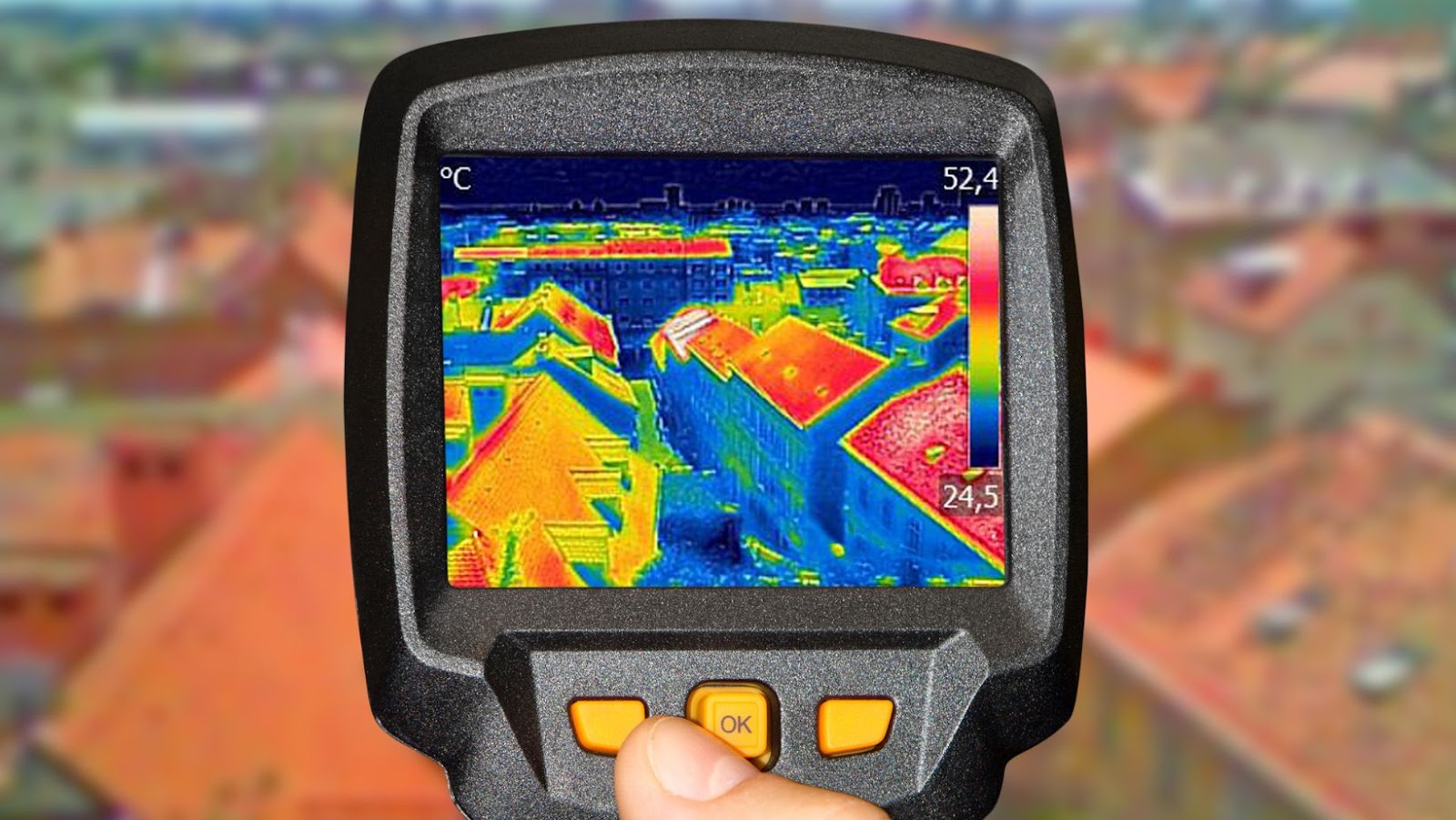The capabilities of thermal imagers are overgrown with legends and it is quite difficult to figure out what they are really capable of. Among the huge number of thermal imagers, it is very difficult to understand which one is really worth attention. What should you pay attention to when choosing and what type of thermal imager will be best for hunting? The answers to these questions are collected in this article.
What is Thermal Vision Technology?
Thermal imaging technology is built around the property of all bodies in nature to emit infrared radiation, or heat. This heat is measured using sensitive sensors (micro bolometers) assembled in blocks, for example 640×480. The data is compared with a standard. The received information is processed by the processor and sent to the pixels that are responsible for the image. They are arranged in a matrix, the resolution of which is indicated on each thermal imaging device. For example, 1024×768 pixels. Pixels form a thermal image of the area. For clarity, each degree is indicated by an individual shade of color. The result is a two-dimensional color image, devoid of shadows and depth of space. At its core, this is a thermal image of everything that the camera of the thermal imager looks at.
Thermal Vision for Hunting
Most shooters hunt warm-blooded animals. Their body temperature stands out against the general background of the area. Thermal cameras have a variety of color palettes that you can customize to your preference. The main point of all palettes is to designate the hottest areas on the terrain. As a rule, these are animals or people. But instruments see more than just a glowing silhouette. For example, thermal imaging monocular highlights areas with increased object heat output more intensely and draws features that can be used to judge about the kind of animal. As a result, the hunter quickly locates the animal, determines its tactical value and decides on the shot.
But, unfortunately, there are exceptions when the thermal imager is practically powerless. This is a variant of a hot summer, when the temperature of the area is warmed up to the temperature of living beings. And they dissolve in the general background, they are not visible. But there are very few such cases. As a rule, even in summer, the background is warmer or colder than the living body. In addition, there are thermal modes that allow you to calibrate the temperature and significantly improve the image. All a hunter needs to do is switch to another mode.
One of the features of thermal imaging optics is the ability to see the beast in damp, rainy weather or in a snowstorm. Fog will not be a reason to stop hunting either. Although, if the conditions are really extreme and the rain is pouring in a dense wall, then it is still better to wait until the weather conditions improve.
Thermal imaging equipment is able to detect an animal among thin bushes or grass. If the body of the target is partially blocked by snow or stone, then a visible, even a small part of it, will still allow it to be detected.
It will be useful for hunters to know that disguising an animal will not save it from a thermal imager. For example, a white rabbit against a background of white snow will be visible on the thermal imager screen.
The advantages of thermal imaging equipment include the ability to take photos, videos and transmit it wirelessly. This feature can be activated manually or automatically after the trigger is released. The video can be saved to the internal memory card, memory of touch phone. In addition, some models support online video streaming.
Due to the fact that the hunter carries a serious weight of equipment, he tends to appreciate compact and versatile devices. Among the thermal imagers, there are two of them – a thermal imaging scope and a thermal imaging monocular.
Thermal Scope
This is the lightest and smallest thermal imaging device that all hunters will appreciate. Shooters will appreciate the built-in rangefinder, several types of reticle, ballistic calculator, compass, image stabilizer and many other programs. Particularly interesting for the hunter is the “picture in picture” function, where the enlarged center of the reticle is displayed at the top of the screen and allows you to view the details.
When choosing a thermal imaging scope, you should pay attention to the screen resolution. Resolution 640*480 guarantees a high-quality contrast image that will not be covered with pixels when you try to enlarge it. It is good to know that very high resolution gives smaller zoom numbers and narrows the field of view.
Equally important is the resolution of the sensor. It can be an order of magnitude smaller than the screen resolution or equal to it. This will provide a clear, good quality image.
In addition to it, the step of the detector is important. Smaller numbers will give a more detailed image and create a lighter and more compact scope. For example, 12 microns would be preferable to 17 microns.
Sensitivity (NETD) is important for hunting in hot or low contrast climates. The lower this number, the better. But the numbers are not as important as an honest manufacturer with good programs.
For a moving target hunter, frame rate is extremely important. We do not recommend going below 50-60 Hz or there is a risk of getting a lagging movement.
When choosing a thermal imaging scope for hunting, you need to pay attention to the magnification. Zoom is digital and optical. Too large zoom numbers will require very sensitive sensors and a matrix with a high resolution. It is justified if you need to hit a target at a great distance. Smooth zoom adjustment will not lose the target. If you know that you are going to hunt from a certain distance, then a constant zoom will do.
Thermal imaging scopes have a very interesting feature – it can be installed on several guns without zeroing. Each weapon with a thermal scope is fired once. In the menu, we form a weapon profile and save the data. When changing weapons, zeroing is not required. You need to go to the appropriate profile and you can shoot.
The design of the thermal imaging scope was created taking into account the impulse load and can withstand all calibers of cartridges.
Sometimes hunting takes place at rather low or high temperatures. The hunter should be aware that thermal scopes have a wide operating temperature range applicable to all states. Scopes with AMOLED, OLED screen cope better with frost.
Thermal Monocular
This is the most versatile thing among all thermal imaging equipment. The thermal imaging monocular performs the function of a mini thermal imaging telescope. There are models for near, medium and long-range observation. In addition, there are models with smooth focusing. But unlike a telescope, it fits in a pocket and weighs very little.
Some models of thermal imaging monocular, with the help of an adapter, can be mounted on a weapon with an optical scope. This manipulation allows you to get a thermal imaging scope without additional zeroing.
If you need hands-free, you can mount the thermal monocular on a special headband or mount it on a tripod.

When choosing a thermal imaging monocular, you should pay attention to the resolution of the screen matrix and sensors. The best thermal monocular has a screen resolution of at least 640*480. Anything higher will produce a better image with more detail, but the cost will also increase. If you have to work on a small area, then you can consider options with a lower resolution.
Sensor resolution is equally important. In order for the image to be contrasting and clear, you need a good sensor matrix. It is acceptable that the resolution of the screen matrix will be an order of magnitude higher than that of the sensor. But, not vice versa.
A frame rate of 50-60Hz will give good motion imaging. A lower refresh rate will only be good for observing or shooting at static targets.
For most hunters, a 4-8x zoom is sufficient. With large numbers, you need to follow the good resolution of the sensor matrix and screen. Otherwise, we risk getting blurry pictures. To the user’s choice offer fixed and variable zoom. It is optical and digital.
The detection range is indirectly affected by the detector step. A step of 12 microns will allow you to see further than a step of 17 microns. At the same time, a device with a smaller pitch will be more compact and more expensive. As for the internal structure of applications, they are similar to all other infrared optics. We liked PIP and the hotspot feature on the screen.
The purchase of a thermal imager should be accompanied by thoughtful analysis. You need to consider your conditions, budget and collect information about a potential purchase. Quite often, there are options outwardly identical, but offering a completely different level of capabilities. The difference in a couple of numbers in the parameters is of great importance. Since a thermal imager is not a budget purchase, it is worth making a little effort and figuring out what potential is inherent in the device. We are confident that the right choice will bring a lot of pleasant emotions on the hunt. You will see how your opportunities will expand not only during the day, but also at night. Thermal cameras allow you to go beyond nature and set your own hunting rules.









